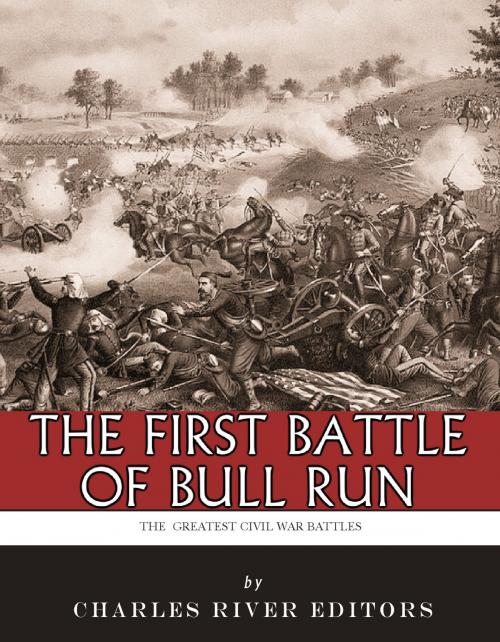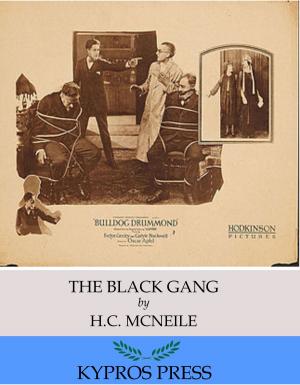The Greatest Civil War Battles: The First Battle of Bull Run (First Manassas)
Nonfiction, History, Americas, United States, Civil War Period (1850-1877), 19th Century| Author: | Charles River Editors | ISBN: | 9781475322491 |
| Publisher: | Charles River Editors | Publication: | March 2, 2013 |
| Imprint: | Language: | English |
| Author: | Charles River Editors |
| ISBN: | 9781475322491 |
| Publisher: | Charles River Editors |
| Publication: | March 2, 2013 |
| Imprint: | |
| Language: | English |
Includes pictures of the battle's important generals and locations.Includes several maps of the battle.Includes accounts of the fighting written by important generals like McDowell, Longstreet, Sherman, Beauregard, and more.Includes a Bibliography for further reading.Includes a Table of Contents. "Today will be known as BLACK MONDAY. We are utterly and disgracefully routed, beaten, whipped by secessionists." - George Templeton Strong, Northern diaristAfter the Battle of Fort Sumter in April 1861 ignited the Civil War, many in the North expected a relatively quick victory, including Abraham Lincoln. Days after the smoke had cleared in Charleston Harbor, the Lincoln Administration pushed for a quick invasion of Virginia, with the intent of defeating Confederate forces and marching toward the Confederate capitol recently relocated to Richmond. Despite the fact commanding general Irvin McDowell knew his troops were inexperienced and unready, pressure from the Washington politicians forced him to launch a premature offensive against Confederate forces in Northern Virginia. McDowell's strategy during the First Battle of Bull Run was grand, and in many ways it was the forerunner of a tactic Robert E. Lee, Stonewall Jackson and James Longstreet executed brilliantly on nearly the same field during the Second Battle of Bull Run in August 1862. McDowell's plan called for parts of his army to pin down Beauregard's Confederate soldiers in front while marching another wing of his army around the flank and into the enemy's rear, rolling up the line. McDowell assumed the Confederates would be forced to abandon Manassas Junction and fall back to the next defensible line, the Rappahannock River. In July 1861, however, this proved far too difficult for his inexperienced troops to carry out effectively. As the first major land battle of the Civil War, the First Battle of Bull Run made history in several ways. McDowell's army met Fort Sumter hero P.G.T. Beauregard's Confederate army near the railroad junction at Manassas on July 21, 1861, just 25 miles away from Washington D.C. Many civilians from Washington came to watch what they expected to be a rout of Confederate forces, and for awhile it appeared as though that might be the case. However, Confederate reinforcements under General Joseph E. Johnston's Army, including a brigade led by Thomas Jonathan Jackson, arrived by train on the eve of the battle, evening up the numbers between Union and Confederate. Shoring up the Confederates' left flank, Jackson's brigade helped reverse the Union's momentum and ultimately turn the tide, along with Confederates that arrived by train during the middle of the battle itself. As the battle's momentum switched, the inexperienced Union troops were routed and retreated in disorder back toward Washington in an unorganized mass. With over 350 killed on each side, it was the deadliest battle in American history to date, and both the Confederacy and the Union were quickly served notice that the war would be much more costly than either side had believed. The Greatest Civil War Battles: The Battle of First Bull Run (First Manassas) comprehensively covers the campaign and the events that led up to the battle, the fighting itself, and the aftermath of the battle. Accounts of the battle by important participants are also included, along with maps of the battle and pictures of important people, places, and events. You will learn about the First Battle of Bull Run like you never have before, in no time at all.
Includes pictures of the battle's important generals and locations.Includes several maps of the battle.Includes accounts of the fighting written by important generals like McDowell, Longstreet, Sherman, Beauregard, and more.Includes a Bibliography for further reading.Includes a Table of Contents. "Today will be known as BLACK MONDAY. We are utterly and disgracefully routed, beaten, whipped by secessionists." - George Templeton Strong, Northern diaristAfter the Battle of Fort Sumter in April 1861 ignited the Civil War, many in the North expected a relatively quick victory, including Abraham Lincoln. Days after the smoke had cleared in Charleston Harbor, the Lincoln Administration pushed for a quick invasion of Virginia, with the intent of defeating Confederate forces and marching toward the Confederate capitol recently relocated to Richmond. Despite the fact commanding general Irvin McDowell knew his troops were inexperienced and unready, pressure from the Washington politicians forced him to launch a premature offensive against Confederate forces in Northern Virginia. McDowell's strategy during the First Battle of Bull Run was grand, and in many ways it was the forerunner of a tactic Robert E. Lee, Stonewall Jackson and James Longstreet executed brilliantly on nearly the same field during the Second Battle of Bull Run in August 1862. McDowell's plan called for parts of his army to pin down Beauregard's Confederate soldiers in front while marching another wing of his army around the flank and into the enemy's rear, rolling up the line. McDowell assumed the Confederates would be forced to abandon Manassas Junction and fall back to the next defensible line, the Rappahannock River. In July 1861, however, this proved far too difficult for his inexperienced troops to carry out effectively. As the first major land battle of the Civil War, the First Battle of Bull Run made history in several ways. McDowell's army met Fort Sumter hero P.G.T. Beauregard's Confederate army near the railroad junction at Manassas on July 21, 1861, just 25 miles away from Washington D.C. Many civilians from Washington came to watch what they expected to be a rout of Confederate forces, and for awhile it appeared as though that might be the case. However, Confederate reinforcements under General Joseph E. Johnston's Army, including a brigade led by Thomas Jonathan Jackson, arrived by train on the eve of the battle, evening up the numbers between Union and Confederate. Shoring up the Confederates' left flank, Jackson's brigade helped reverse the Union's momentum and ultimately turn the tide, along with Confederates that arrived by train during the middle of the battle itself. As the battle's momentum switched, the inexperienced Union troops were routed and retreated in disorder back toward Washington in an unorganized mass. With over 350 killed on each side, it was the deadliest battle in American history to date, and both the Confederacy and the Union were quickly served notice that the war would be much more costly than either side had believed. The Greatest Civil War Battles: The Battle of First Bull Run (First Manassas) comprehensively covers the campaign and the events that led up to the battle, the fighting itself, and the aftermath of the battle. Accounts of the battle by important participants are also included, along with maps of the battle and pictures of important people, places, and events. You will learn about the First Battle of Bull Run like you never have before, in no time at all.















